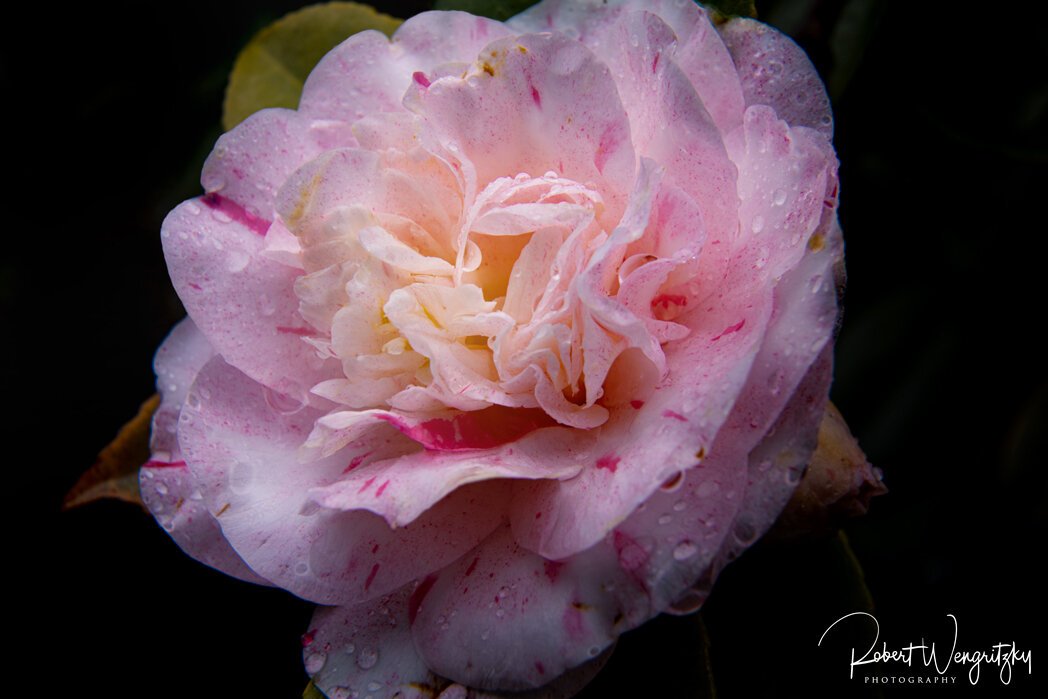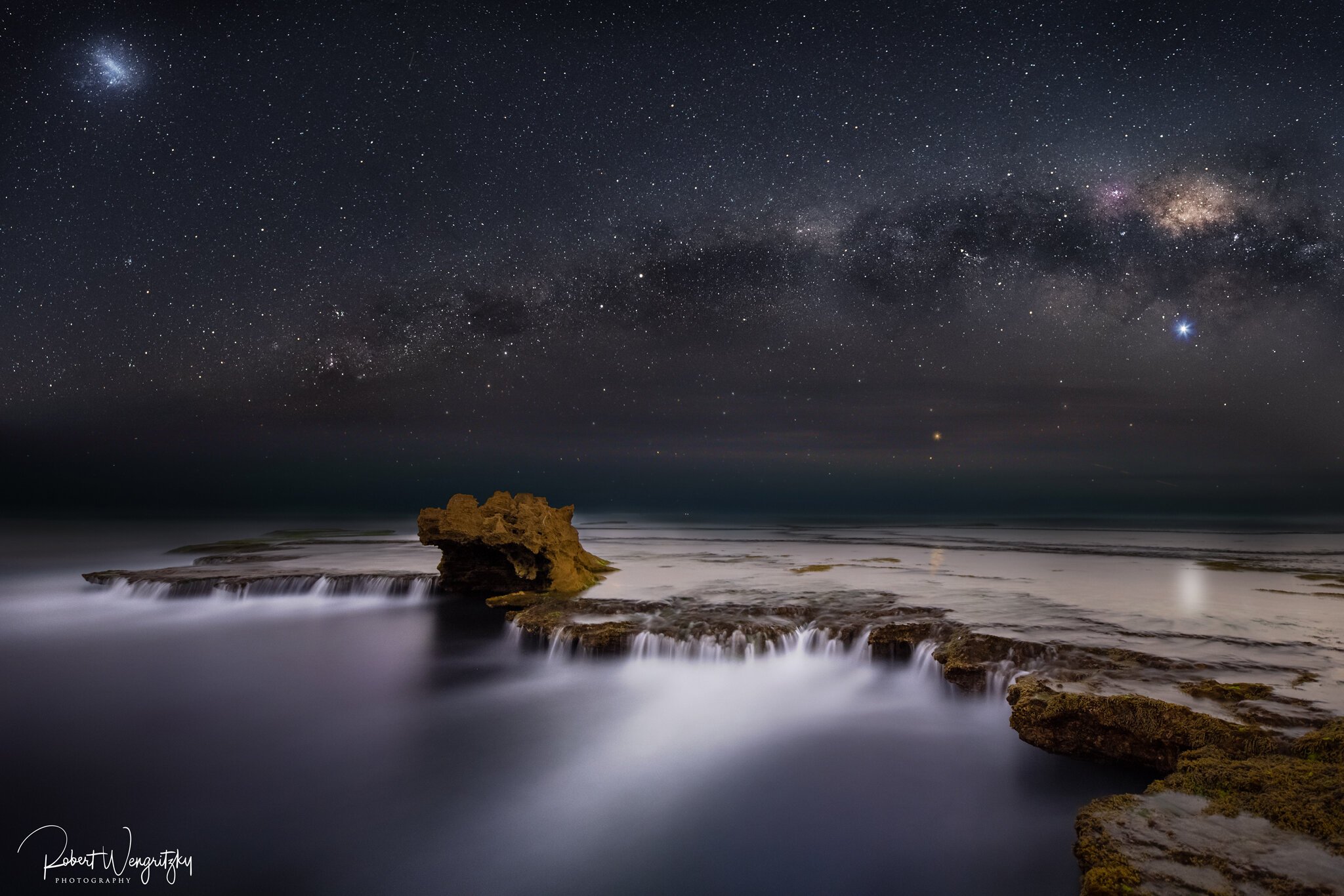Mastering Focus Stacking: A Complete Guide for Landscape Photographers
Focus stacking is a powerful technique that allows landscape photographers to capture sharp images from the foreground to the background, ensuring every detail is in perfect focus. In this comprehensive guide, I'll delve into the essential aspects of focus stacking, from camera settings in the field to optimizing focus at night and mastering the art of focus stacking in Photoshop.
Focus stacking at Night presents many challenges but is well worth the effort. Multiple images were taken to allow a sharp overall image of this bunch of bioluminescent Ghost Mushrooms
Part 1: Settings on Camera in the Field
Understanding Aperture
When preparing for focus stacking in the field, your choice of aperture is crucial. Aperture directly affects the depth of field, and selecting the right setting can make or break your focus stacking success.
Aperture Selection: Start by choosing an aperture that provides a sufficient depth of field. Typically, this falls in the range of f/8 to f/16, but it may vary based on your subject and lens.
Avoid Extreme Apertures: Avoid extremely wide apertures like f/1.4 or very narrow ones like f/22, as they can lead to unwanted effects like softness due to diffraction or a shallow depth of field.
Manual Mode: Use manual mode on your camera to have full control over the aperture setting. This ensures consistent results across all your shots.
Shutter Speed and ISO
While aperture plays a significant role, don't forget about shutter speed and ISO settings, which complement your focus stacking process.
Shutter Speed: Ensure your shutter speed is appropriate for the scene and lighting conditions. A faster shutter speed may be necessary to capture moving subjects, while a longer exposure might be needed for low-light conditions.
ISO Sensitivity: Keep your ISO as low as possible to maintain image quality. Higher ISO settings can introduce noise, which can be challenging to deal with during post-processing.
Tripod and Stability: To maintain sharpness and prevent camera shake, use a sturdy tripod and a remote shutter release or timer delay.
Part 2: How Many Photos to Take
Determining the Number of Shots
Focus stacking requires taking multiple shots of your subject, each with a slightly different focus point. The number of shots needed depends on factors such as the lens focal length, subject distance, and desired depth of field.
Focal Length: Longer focal lengths typically require more shots for adequate focus stacking. Wide-angle lenses may need fewer shots.
Subject Distance: The closer your subject, the more shots you'll need to cover the depth of field. Distant landscapes may require fewer shots.
Depth of Field: Decide how much of your scene you want to be in focus. A larger depth of field requires more shots.
Rule of Thumb: A common rule of thumb is to take a series of shots, each with a focus point about one-third into the scene. Adjust this based on your specific circumstances.
Overlapping Shots
To achieve seamless blending in post-processing, it's crucial to overlap your shots correctly.
Overlap Percentage: Aim for a 20-30% overlap between each shot. This ensures that there are enough common elements in adjacent frames for smooth blending.
Focus Bracketing: Some cameras have a focus bracketing feature that automates the process, capturing a sequence of shots with incremental focus adjustments.
Focus stacking can be particularly important when dealing with close up subjects
Part 3: Optimizing Focus at Night
Subheading: Challenges of Night Photography
Nighttime photography introduces unique challenges when it comes to focusing. Overcoming these challenges is essential for successful focus stacking.
Low Light Conditions: In the absence of natural light, it can be challenging to see your subject clearly, making focusing difficult.
Manual Focus: Switch your camera to manual focus mode. Autofocus may struggle in low light.
Live View Mode: Utilize your camera's live view mode to magnify the image on your screen, allowing for precise manual focusing.
Live View and Manual Focus
To optimize focus at night, follow these steps:
Use a Strong Light Source: If possible, shine a flashlight on your subject to illuminate it temporarily. This will make manual focusing more manageable.
Magnified Live View: Activate live view and use the magnification feature to zoom in on a specific area of your composition.
Adjust Focus Ring: Carefully turn the focus ring on your lens until the desired area is sharp. Pay close attention to details in the live view.
Take Test Shots: Capture test shots and review them on your camera's LCD screen to confirm focus accuracy.
A crisp foreground requires a different focus to that of a night sky, which has focus set to infinity
Part 4: How to Focus Stack in Photoshop
Preparing Your Images
Once you've captured a series of shots with varying focus points, it's time to bring them into Photoshop for focus stacking. Here's how to get started:
Import Your Images: Transfer your photos to your computer and organize them in a dedicated folder.
File Naming: Rename your files sequentially to make it easier to identify them during the stacking process.
Open Photoshop: Launch Adobe Photoshop and go to "File" > "Scripts" > "Load Files into Stack." Select all your images and load them into a single Photoshop document.
Aligning and Blending
Photoshop offers powerful tools to align and blend your focus-stacked images automatically.
Auto-Align: Under the "Edit" menu, choose "Auto-Align Layers." This function aligns your images to ensure they match perfectly.
Auto-Blend: After alignment, select all layers and go to "Edit" > "Auto-Blend Layers." Choose "Stack Images" to initiate the blending process.
Review Results: Photoshop will blend the images, ensuring that the sharpest areas from each shot are combined into a single, perfectly focused composite.
Manual Blending
In some cases, the auto-blend function may not produce the desired results. If this happens, manual blending may be required:
Layer Masks: Add layer masks to each layer and use a soft brush to paint in the areas where you want to reveal the sharp focus.
Fine-Tuning: Carefully adjust the layer masks to ensure a smooth transition between focus points.
Fine-Tuning and Post-Processing
Once your focus stack is complete, you may want to perform additional adjustments:
Sharpening: Apply sharpening selectively to enhance details further.
Color Correction: Make any necessary color corrections or enhancements.
Filters and Adjustment Layers: Utilize filters and adjustment layers for creative effects or to fine-tune your image.
Exporting and Saving
Finally, save your focus-stacked image:
File Format: Choose an appropriate file format, typically JPEG or TIFF, depending on your intended use.
File Name: Give your focus-stacked image a descriptive and unique file name.
File Size: Consider resizing the image if needed for web or print purposes.
By following these steps, you can achieve stunning focus-stacked images in Photoshop.
In conclusion, mastering focus stacking is a valuable skill for landscape photographers. By understanding the camera settings needed in the field, determining the number of shots, optimizing focus at night, and mastering the post-processing techniques in Photoshop, you can elevate your photography and capture breathtakingly sharp and detailed images.



